|
This month, there was an incredible out-pouring of positivity and support for International Women’s Day on March 8. It’s so inspiring to see everyone’s photos, quotes, and moments shared online for such an uplifting day. In the spirit of what International Women’s Day started, I’m dedicating this post to my favorite woman author illustrator, as well as a few of my new discoveries. Leuyen (Le-win) Pham is one of my favorite author illustrators. I had the pleasure of watching her speak at last summer’s SCBWI Summer Conference, and it was amazing to see her incredible talent, diverse style and overall sunny personality speak about writing and illustrating children’s books. She's illustrated picture books, chapter books, board books and graphic novels (I wish I could remember how many she said she had worked on the year I went to see her speak, but the number was incredible, I don't know where she finds the creative energy, but she is a magical author illustrator unicorn!) Pham is such an inspiration. I picked up The Bear Who Wasn’t There, and it’s one of my favorite picture books. Kids will love the unexpected main character of a wacky duck in a bear book and the suspense of waiting for the bear to show up. (Does he show up? Pick this book up and found out.) http://www.leuyenpham.com/ At this year’s L.A. Writer’s Day, I saw Bethany Barton speak about social media tips and share her latest books. Barton’s own story is one I could relate to- as someone who also has a day job outside of children’s picture books, Barton has such a fun and gestural style, full of exciting color splashes, textures and brushstrokes. I picked up her book, I Tried to Love Spiders, a great pick for those who love spiders, and those who get a bit squeamish by them (like me). She also has an equally entertaining new book, "Give Bees A Chance", which Check her work out, she’s infuses humor and so many heart-felt thoughts- the dynamic of the inky splashes and the warm fuzzies is so striking and beautiful. http://www.bethanybarton.com/ And to round it up, I'm including a couple of moon-themed books that caught my eye on my last trip to the bookstore. Moon: A Peek-Through Picture Book by Britta Teckentrup and Rabbit Moon by debut author illustrator Jean Kim. Maybe it was the full moon calling out to me that day, but the illustrations in both of these picture books are so beautiful and soothing. Moon: A Peek-Through Picture Book by Britta Teckentrup creates slivers, then slices of cut-outs of the moon that kids will have fun watching grow. The illustrations of the animals in night-time scenes are beautifully quiet, but full of life. http://www.brittateckentrup.com/ Rabbit Moon by Jean Kim introduces readers to the Korean lore of the rabbit (not the man) on the moon, and the universal desire for friendship and belonging. Kids will delight in this fresh take on wishes and enjoy the adorable furry characters. http://jeankim.me/ Do you have a favorite lady author illustrator? Please share if you do. This post was really fun, and I'd love to do another women author illustrator post and celebrate their incredible talent!
You can find more of Sarah's musings and drawings here:
www.sarahmomoromero.com Facebook: Sarah Momo Romero + Instagram: @sarahmomoromero + Twitter: @sarahmomoromero by Bryan Patrick Avery For the past few weeks, I’ve been working on a few magic tricks that fall well outside my comfort zone. It’s pushed me to learn a few new things, both about magic and about myself. In short, it’s been quite an adventure. This got me thinking about some of my favorite middle grade adventures, so I thought I’d share three of them with all of you this month. First up, the interstellar adventure A Wrinkle in Time. Long before the “dark and stormy night” was a hit movie, it won the 1963 Newberry Medal. Madeleine L’Engle’s novel centers on the journey of touble-maker Meg, wise-beyond-his-years Charles Wallace, and popular student/athlete Calvin O’Keefe. They set out to find Meg’s and Charles Wallace’s father who has disappeared while working on a secret government experiment. Helped by three rather peculiar strangers, this adventure changes the way they see Earth and the rest of the universe. What I love most about A Wrinkle in Time is the constant sense of wonder and discovery the children have at every turn. Even as they encounter what may be the most potent concentration of evil in the universe, Meg, Charles Wallace, and Calvin never loose their drive to explore. If you haven’t read it, or haven’t read it in a long while, I encourage you to read (or re-read) it. L’Engle’s novel is excellent example of world building and storytelling at its finest. Of course, you don’t have to travel across the universe to find adventure. Sometimes, a trip from across country will do the trick. In Rita Williams-Garcia’s Newberry Medal-winning One Crazy Summer, sisters Delphine, Vonetta, and Fern find adventure when they travel from Brooklyn to Oakland to meet the mother who abandoned them several years earlier. The year is 1968. The girls spend their evenings eating Chinese take-out on the floor and their days at a summer camp hosted by the Black Panthers. While their mother all but ignores them, the three girls learn to navigate Oakland during this emotional time, both physically and mentally. As tensions rise, the girls rise as well and, in their own way special way, contribute to the cause. One Crazy Summer is both entertaining and enlightening and a must read for any writer looking to improve their own writing. The sense of place, and the emotion, bright to light by Williams Garcia is nothing short of brilliant. If a trip across the universe, or even the country, isn’t your style, perhaps a trip into a local forest might be your thing. In Newberry Medal-winner Hello, Universe, written by Erin Entrada Kelly, the lives of four local kids intertwine in an adventure that any middle grader can relate to. Virgil is hopelessly shy, to point where his own parents call him “Turtle”. Valencia, who is deaf, is the very embodiment of adventure but still feel somewhat isolated. Kaori is a psychic (at she says she is) and Chet is a bully who is put out by all these weird kids. The four kids (plus Kaori’s little sister Gen) hear the call an adventure when Virgil and his pet hamster end up trapped at the bottom of a well. As Virgil tries to free himself, Valencia, Kaori and Gen, set out to find him as well. Meanwhile, Chet, on a quest of his own to find a live snake in the woods, discovers he might not be quite as brave as he thought he was. When it’s all said and done, the adventure has transformed each of the four and forged what are likely unbreakable bonds between them. Hello, Universe is a beautifully written reminder that adventures come in all shaped and sizes.
That’s all for now. I’m off to practice (and do some writing of my own). Have a magical month. by Melissa Stoller In a chapter book, the first line of each chapter should hook readers and draw them into the story. Similarly, the last line of each chapter should ease the transition into the next chapter. That important last line should serve as a mini-cliffhanger to keep the reader turning pages to find out what happens next. When I write my chapter books, I look at each chapter as a story, with a beginning, middle and end. And I rely on my first and last sentences of each chapter to help propel the action. Here are some examples of first and last lines from the first chapter of five popular chapter books. When I read these lines, I feel compelled to turn the page and continue the journey. The Fantastic Frame: Danger! Tiger Crossing, by Lin Oliver Chapter 1 first line: “I saw a giant orange pig on our swing set this morning,” said my little sister, Maggie. Chapter 1 last line: If a talking orange pig lived next door, maybe something even weirder was lurking in my own backyard. Key Hunters: The Mysterious Moonstone, by Eric Luper Chapter 1 first line: “There she goes again,” Cleo whispered. Chapter 1 last line: Cleo and Evan ran back to look, but Ms. Crowley was gone. The Haunted Library: The Ghost in the Attic, by Dori Hillstad Butler Chapter 1 first line: “What’s the matter, Kaz?” Claire asked as she shook the dice in her hand. Chapter 1 last line: Like Beckett said, if he went into the Outside, he would blow away. Roscoe Riley Rules: Never Glue Your Friends to Chairs, by Katherine Applegate Chapter 1 first line: Hey! Over Here! Chapter 1 last line: Well, maybe you should hear the whole story . . . Ballpark Mysteries: The Fenway Foul-Up, by David A. Kelley Chapter 1 first line: “Watch out,” Kate yelled. Chapter 1 last line: “Big D’s lucky bat has been stolen!” And as a bonus, here’s my chapter book example: The Enchanted Snow Globe Collection: Return to Coney Island, by Melissa Stoller Chapter 1 first line: “Ha, I won again,” said Emma. Chapter 1 last line: After a few moments, a huge roller coaster appeared in front of them as they gently landed on solid ground. So if you’re writing a chapter book, or any book, consider the first and last lines of each chapter to make sure they hook the reader right from the beginning, and then help move the reader to the next chapter with an exciting or suspenseful transition. Happy writing and creating! I hope to see you in the comment section below! BIO: I'm getting ready to teach another fabulous picture book writing course with exquisite Random House/Knopf Assoc. Editor Kelly Delaney and have been reflecting on why some books sell and others don't. So I came up with five reasons why your picture book might not be selling. Let's start with the four essentials that every picture book needs to have. ,One. Is your story and language age-appropriate? Your story needs to be age appropriate with age appropriate interests and language. In other words you need to know about children's developmental stages. For example, if you are writing a book for 3-5 year-olds, you might want to re-think having a super scary Halloween story with an unresolved ending as kids that age can have trouble differentiating between fantasy and reality and can also be fearful of the unknown. At the same time, you could absolutely have a Halloween story for that age but you'd want to make it playful with a reassuring ending so that the child won't be scared to go to sleep at night. Generally with a much younger audience, stories need to be sweeter, or more quirky or goofy, or reassuring than scary. In terms of language, 3 to 5-year-olds are beginning to learn about their world and starting to try and decipher or memorize words to keep up with the read aloud. So the language needs to be more manageable, more playful, and more accessible. If you do introduce higher level language, you need to contextualize it, or explain what it means in some way either through the images, or in context with what else is going on in the story. The Fancy Nancy books, which are marketed for 4-8 year-olds use elevated language, which is explained in asides by Nancy such as, “My favorite color is fuchsia. That's a fancy way of saying purple.” The word is explained in a fun way while adding to the kid's vocabulary . While Tara Lazar's list of "500+ Things That Kids Like" isn't set up in terms of developmental stages, it is a fun read to get inspired. https://taralazar.com/2007/11/04/199-things-that-kids-like/ Two Do you write in a way that makes the reader want to keep reading? This begins at the beginning with your hook - in the form of a problem that needs to be solved, a journey that needs to be taken, a great desire that needs to be attained and so on... to provoke the big question or curiosity of... What happens next? Pacing your story through suspenseful tries and fails and gripping page turns, or laugh out loud language will help you keep your reader hooked. Language comes into play in a big way. If it's a soulful book or more serious nonfiction, use exquisite lyrical language with assonance, consonance, alliteration and beautiful rhythms. If if it's a playful or funny book use onomatopoeia, wordplay, the different types of lyrical language described above and different types of humor (hyperbole, contradiction, malaprops, spoonersims etc.). Three. Do you make the reader care enough about your characters to stay with them? No matter what your characters are like, we need to care enough about them to want to stick with them throughout the story and we also need for them to be memorable. Even if they're not that sympathetic you can make them more sympathetic by making them charming, or by revealing where they got their flaws from, or having them do or show something kind-hearted or generous early on in the story. For example, "Grumpy George didn't have any friends, except his Mama and his little brother Gordy, who he loved more than anything else in the world." Well if he loves his Mama and his little baby brother, he can't be all bad and there's room for redemption. One of my all-time favorite sympathetic villains is John Szieska's A. Wolf in The True Story of The 3 Little Pigs by A. Wolf. He's such an incredibly charming unreliable narrator (liar) that we can't help but keep turning the page. Think about giving your characters quirky names or names that go against their essential nature as Jenny Offil does with Sparky! (the sloth). Your characters are the emotional core of your story and their problems and feelings become our problems and feelings as we stay with them on their journey to solve the problem or attain their goal. Four. Do you leave your reader satisfied at the end? You need to give your picture book a wonderful ending that ties up all the loose ends, and leaves the reader with a good feeling whether that's a satisfied feeling of well-done, a touching tender feeling of "awwww", or a big smile or laughter with a twist at the end. Reading children's picture books needs to be a satisfying experience no matter what the subject matter, so that kids will want to become readers or become stronger committed readers. It's a big responsibility, one that editors and agents take seriously, no matter how playful the book. So ask yourself: Is my story and language age-appropriate? Do I write in a way that makes the reader want to keep reading? Do I make the reader care enough about my characters to stay with them? Do I leave my reader satisfied at the end? If you can answer yes to all of these, you are 3/4 of the way there. Now I'm going to insert 4.5 here with some other practical things before launching into the slightly more random #5 Four.5 Did you present professionally? Editors and agents are crazy busy. You cannot imagine how stretched they are, which is why you need to research them first and address them as people with names when submitting and why you are specifically submitting to them. Your manuscript needs to be professionally formatted with few typos or errors and the same with your cover letter, which should be as charmingly written as your story. You want to come across as professionally and personable as possible so that they will want to work with you and reassure them by the professionalism of your submission package that you know what you are doing and that you won't be a pain to work with. Why? Re-read Four.5's first sentence. And now for reason five of why your book might not be selling Five Did you submit to the wrong place or wrong person at the wrong time, or Are you resisting to persisting in submitting? The beginning of this one is a bit of a wild card. You might have submitted your work to an editor at a house that has just acquired a book very similar to yours, or there might be another similar book already on their list (this is where research comes in handy because they don't want to compete with themselves) or you might submit your dog story manuscript or query to an editor who dislikes or doesn't connect with dogs. Fortunately with MSWL sites (manuscript wish lists from editors and agents), you can find out what specific editors and agents like or are looking for in advance. The thing to be aware of with this is time sensitivity. By the time you contact them with your alien chocolate loving cat story, you editor or agent might have acquired another chocolate loving cat story from someone else, which is why it's important to not write according to what someone else loves, but to write what is meaningful or important for you. Still, if you go to MSWL and find someone who loves or likes things similar to what you are writing - go for it! Here are some links for a few MSWL websites that might prove super helpful for you (you might even want to start putting your own custom database together: http://mswishlist.com/ http://www.manuscriptwishlist.com/find-agentseditors/editors/ and http://avajae.blogspot.com/2014/09/manuscript-wish-list-mswl-hugely.html And finally - are you resisting in persisting in submitting your manuscript after receiving some rejections? Children's book creatives are in a weird position in that we need to be sensitive to create kid's books and at the same time we have to have a thick skin to learn from critiques and rejections and not personalize them so that we can keep improving our work and re-submitting. Oy! But the thing is that the people who do all 5 (or 6) of these things well are the ones most likely to succeed. Having a wonderful support network, continuing your education into both the craft and business of creating kid's books, and being persistent really are the keys to success. Dr Mira Reisberg is an editor and art director at Clear Fork Publishing’s children’s imprint Spork. She is also a multi-published, award-winning children’s book illustrator and author whose books have sold over 600,000 copies. Mira also runs and continues to help children’s book writers and illustrators get published with the courses at the Children’s Book Academy. In a former life not too long ago, Mira was a literary agent and a children’s literature professor. She has a PhD in Education and Cultural Studies with a focus on kid lit. Mira will be co-teaching the Craft and Business of Writing Children's Picture Books starting April 16th right here http://bit.ly/cbwpb
|
We are so excited to be mixing things up at CBA, beginning with some delicious additions to the Blogfish. Meet our awesome bloggers!!
Here's our lineup: 1st Mondays begin with former school psychologist Dr. Debra Collins who will be writing about Social emotional Learning in kidlit and behind the scenes as well as Jewish children's books. 2nd Mondays will feature super smart Melissa Stoller whose career is taking off with several new books. 3rd Mondays will feature our new blogger coming soon. 4th Mondays features new blogger, the fabulous Brentom Jackson, who has a beautiful approach to blogging. And 5th Mondays we'll be taking a break Archives
July 2024
|
|
Discover
|
About Us
|
Join Us
Join our Community and receive a fabulous free gift, KidLit tips, newsletters, scholarship info, contests, and more!
Join our KidLit Mentorship |
Social Media
Interact with our FaceBook Group or follow us on:
|
© 2010-2024 All content on this website is copyrighted. Sorry, all courses are non-refundable.
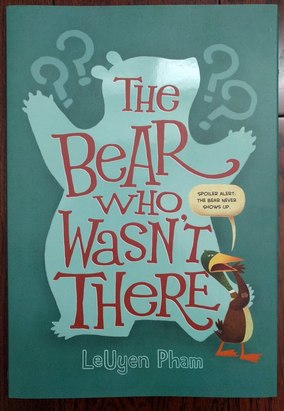
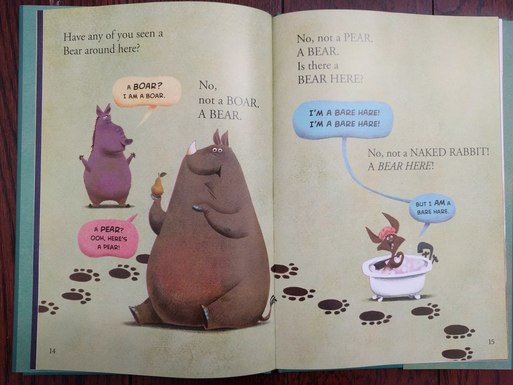
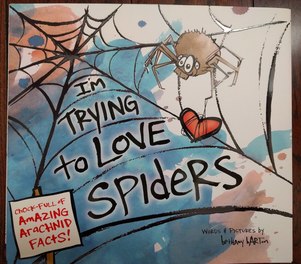
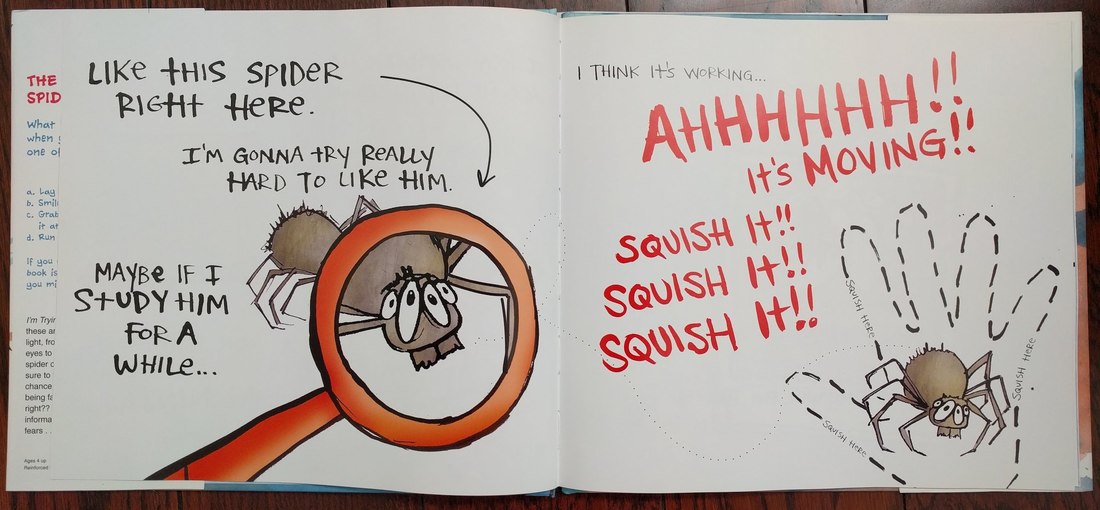
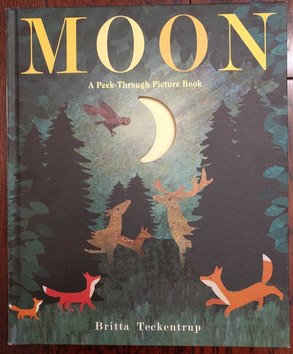
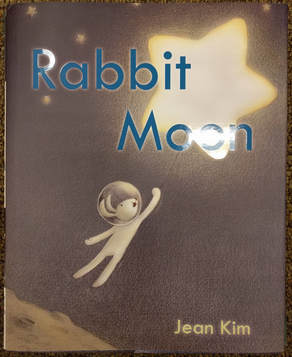

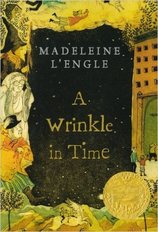
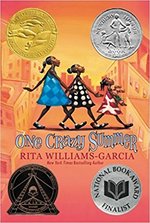
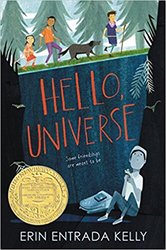
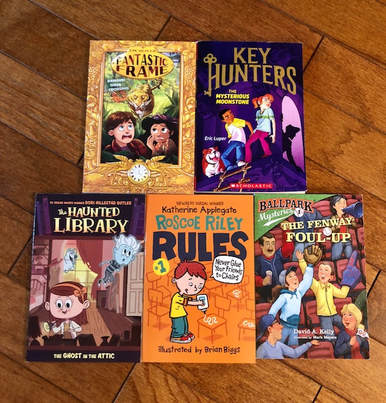
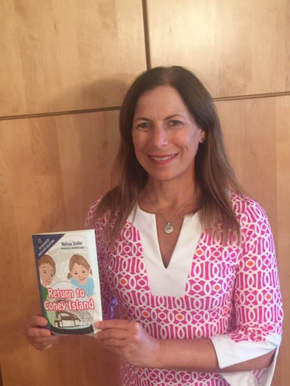
 RSS Feed
RSS Feed
